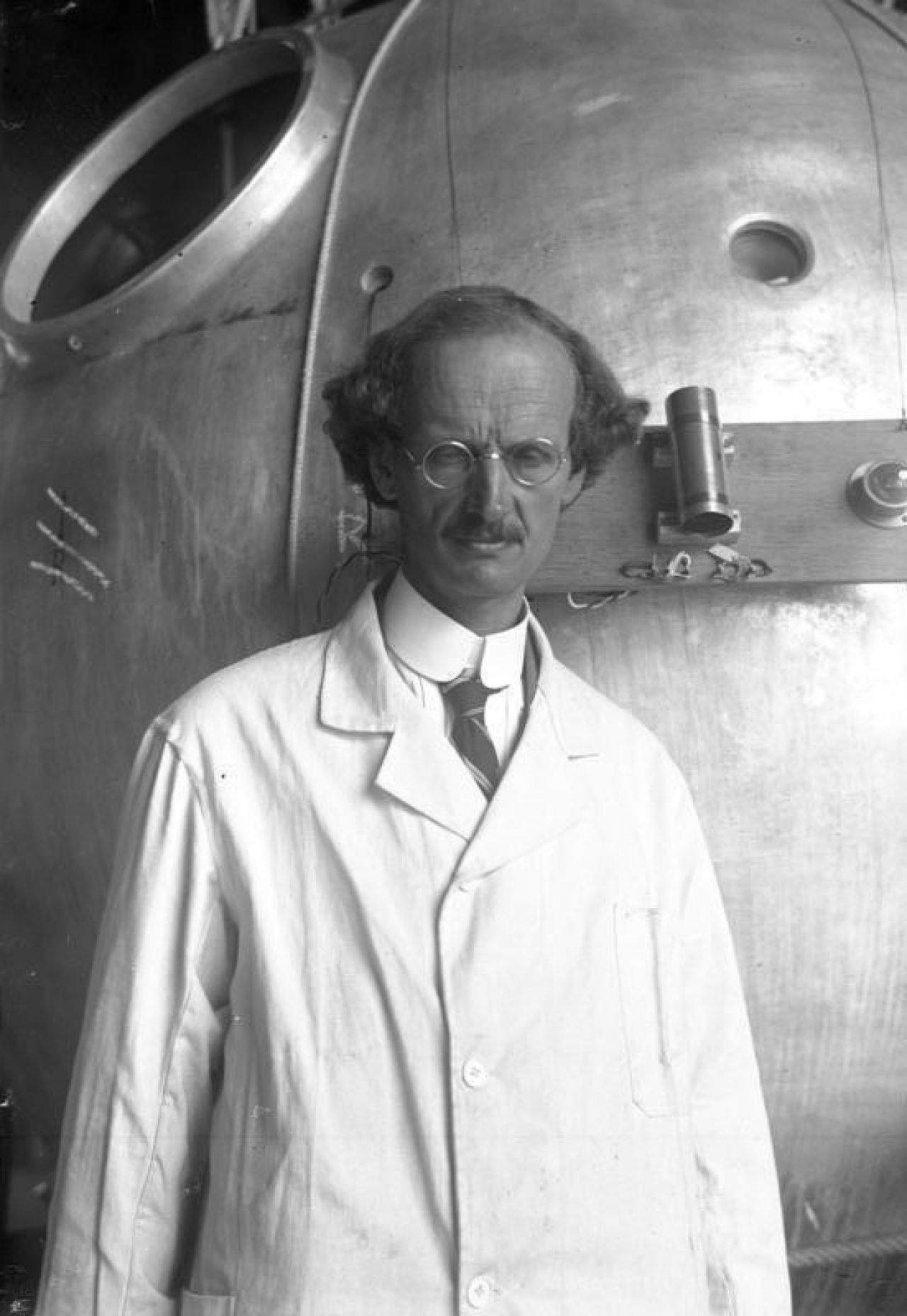Flying High with Auguste Piccard
On May 27, 1931, Swiss-born aeronautical pioneer Auguste Piccard, together with his co-pilot Paul Kipfer, did something rather amazing. Encased in an aluminum capsule attached to a hydrogen balloon, they slowly made their way from Earth up into the stratosphere, the first humans to do so, and reaching an altitude of 51,775 feet—almost ten miles. […]
On May 27, 1931, Swiss-born aeronautical pioneer Auguste Piccard, together with his co-pilot Paul Kipfer, did something rather amazing. Encased in an aluminum capsule attached to a hydrogen balloon, they slowly made their way from Earth up into the stratosphere, the first humans to do so, and reaching an altitude of 51,775 feet almost ten miles. After their mostly successful flight Piccard gathered quite a bit of useful data the capsule crash-landed in the Alps.
Born January 28, 1884, Piccard showed great interest in science during his youth. He studied at the Swiss Federal Institute of Technology, and in 1922 was a professor of physics at the Free University of Brussels. His love of science and adventure would drive him toward his chief pastime: exploration. His experiments, explorations, and research would gain him great notoriety in the field of physics, and even in popular culture.
Piccard was equally fascinated by flight, particularly by ballooning. This, combined with his deep interest in the Earth's atmosphere, led to the construction of the aluminum capsule basically a completely enclosed cabin, like unto the control center on a space shuttle or the cockpit of a modern airplane allowing Piccard to ascend into the atmosphere and better understand its properties.
Piccard would return to the stratosphere the following year, August 18, 1932, ascending even higher than his first attempt: 53,153 feet. Over the years, he would take to the heavens twenty-seven times, setting his own record altitude of 75,459 feet. On these flights Piccard investigated the behaviors of cosmic rays, as well as Albert Einstein's Theory of Relativity (he and Einstein were acquainted, meeting at several conferences).
The Earth's upper atmosphere is sometimes referred to as near space. It ranges from 65,000 feet above sea level to approximately 328,000 feet. Humans require protective gear when ascending to such heights, just as we do going into space. Piccard's metal gondolas skimmed the edges of the stratosphere (the lowest level of near space), which is why Piccard and his co-flyers did not require any specialized garments or breathing apparatuses.
Piccard would eventually turn his explorations to the ocean. In 1937, he adjusted the design of his capsule called a bathyscapeto be made of steel and to withstand intense outside pressure. Unlike Piccard's trips into the atmosphere, the bathyscape was unmanned. It made several dives in 1948. Piccard eventually re-designed the craft to safely house a person and, in 1954, a diver descended 13,701 feet.
Piccard and his adventures have proved ripe for contemporary artists and entertainers. It's supposed that Star Trek creator Gene Roddenberry named Patrick Stewart's character Captain Jean-Luc Picard after both Auguste and his twin brother Jean Felix. Adventures of Tintin illustrator Herg created a character, Professor Cuthbert Calculus, inspired by Piccard. British composer Will Gregory wrote an opera, Piccard in Space, all about that first flight into the stratosphere.

 Member Connect
Member Connect